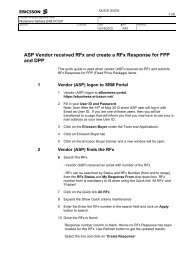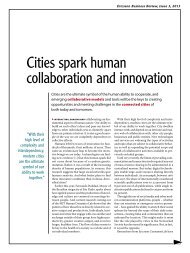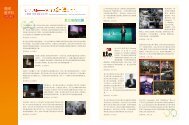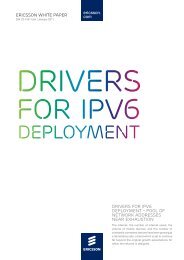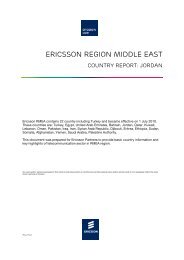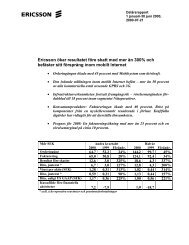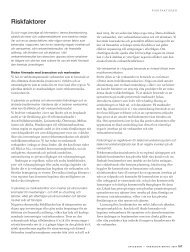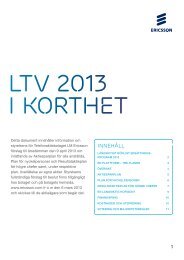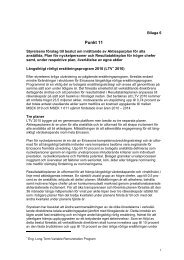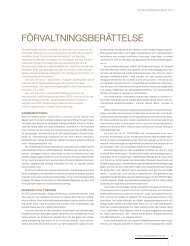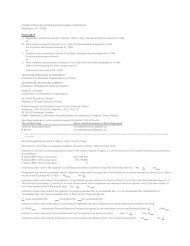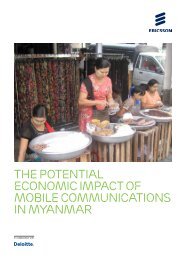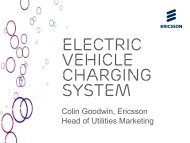Telenor's - Ericsson
Telenor's - Ericsson
Telenor's - Ericsson
- TAGS
- ericsson
- www.ericsson.com
You also want an ePaper? Increase the reach of your titles
YUMPU automatically turns print PDFs into web optimized ePapers that Google loves.
THEME »» connecting machines »» the consumer angle<br />
▶<br />
34 EBR #3 2010<br />
TECHNOLOGY ONLY PART OF THE EQUATION<br />
The technology has to be shaped into something<br />
people understand, like, want and enjoy. This is<br />
why the industry must be able to foresee how its<br />
products are going to be understood, perceived<br />
and experienced.<br />
And this is where many technology-heavy<br />
companies fail, because it is the point at which it<br />
is necessary to leave the rational technological<br />
logic behind. People already know quite a lot<br />
about the technologies they use, but our perceptions<br />
and behavior are very much decided by our<br />
emotions – which, in turn, are affected by many<br />
different things: for example, comprehension,<br />
physical and social context, trust or control.<br />
These are the kinds of issues being addressed<br />
in the User Experience Lab at <strong>Ericsson</strong> Research.<br />
The cross-competence team conducts ethnographic<br />
studies, develops design concepts, facilitates<br />
ideation, makes prototypes and performs<br />
user tests.<br />
Designing innovative service concepts and<br />
novel ways of interacting with technology is very<br />
much about understanding how users apply mental<br />
models to make sense of something. One important<br />
field related to the design of an Internet<br />
of Things is the study of how users make sense<br />
of, and experience environments of numerous<br />
networked devices.<br />
In a study conducted by User Experience Lab<br />
focusing on usability issues in handling and managing<br />
several wireless networked devices, the participants<br />
were asked if they could explain what a<br />
wireless network was. This particular study was<br />
conducted in Sweden where, as in many other<br />
parts of the world, having a Wi-Fi network at home<br />
has become common. As expected, most of the<br />
participants confirmed that they knew what a<br />
wireless network was, in reality meaning that they<br />
knew what it was used for, or how to use it.<br />
However, none of the participants actually explained<br />
their Wi-Fi networks by describing any<br />
of the characteristics of a network. Since people<br />
tend to describe something by referring to how<br />
they think it works in combination with how it<br />
is used, it was not surprising that in general, the<br />
participants’ definition of a wireless network was<br />
that it is something (typically a laptop) that connects<br />
to the internet, for example. In other words,<br />
people casually define a wireless network as a replacement<br />
for a cable. This means that the word<br />
“network” has gained the somewhat simplified<br />
connotation of a series of a-to-b connections,<br />
rather than a web of numerous, simultaneous<br />
many-to-many interconnections, which is<br />
the actual nature of a network.<br />
MAKING USERS AWARE<br />
Their definition was not something that<br />
affected the participants’ ability to use their<br />
Wi-Fi networks. But when they were presented<br />
with new concepts, where layers of device-independent<br />
multimedia services were introduced<br />
in the network, the mental model of a-to-b con-<br />
nections became an obstacle that effectively<br />
meant the participants were unable to understand.<br />
The layer of services required the participants<br />
to be naturally aware of the interconnections<br />
in the network, an awareness they did not<br />
have because their conceptualization did not accommodate<br />
interconnections.<br />
The participants were not by any means unintelligent,<br />
and many were extremely technology savvy.<br />
This simplified understanding of a network is<br />
reached through common sense, and is the way<br />
people normally figure things out. People understand<br />
a new thing by looking for a previously existing<br />
thing that is close enough in terms of usage,<br />
form and function to be seen as its predecessor.<br />
For example, most people categorize today’s<br />
advanced mobile device as a phone, and regard<br />
making voice calls as its obvious main function<br />
– even people who tend to use it almost exclusively<br />
for text messaging, playing games, accessing<br />
a variety of applications or browsing the web.<br />
That is how strong the mental connection is to<br />
its analog ancestor.<br />
The same logic applies to people who view their<br />
wireless networks as a series of invisible cables.<br />
Before we had wires to connect things; now we<br />
use a Wi-Fi network. Language also reveals a lot<br />
about how people make sense of things, not to<br />
mention how the words reinforce the concepts<br />
they are used as descriptions for. Hence “wireless<br />
network” relies on the concept of “wire” to give<br />
an idea of what it is.<br />
Looking ahead, if we keep in mind how analog<br />
ancestors and mental models affect people’s<br />
understanding, then the term “Internet of Things”<br />
is clearly problematic. The words themselves<br />
force us to mentally connect it to what we know<br />
of the internet. We automatically interpret it to<br />
mean something like: “things with internet” and/<br />
or “internet with things in it.” Since most people<br />
commonly use the terms World Wide Web and<br />
the internet interchangeably, the derived understanding<br />
of the “Internet of Things” will be something<br />
like “things with web pages, links, e-mail<br />
and Twitter accounts.”<br />
This description may fit many of the connected<br />
gadgets that we see today, but it gives no<br />
effective intuitive understanding of the implications<br />
of, and opportunities afforded by, a web of<br />
billions of connected physical/intangible, visible/<br />
invisible, always online and real-time interrelated<br />
devices, sensors, services, environments, places,<br />
objects and users.<br />
WHY PERCEPTION MATTERS<br />
What’s the big deal, you may ask? Is it not so that<br />
simplicity is in fact a good thing when we talk<br />
about usability and user interaction? Well, yes<br />
and no. It depends. For the Wi-Fi networks in our<br />
homes today, the metaphor of invisible wires is<br />
perfectly adequate. But for a future scenario<br />
where we have billions of networked things, this<br />
simplified understanding becomes a limitation<br />
that has to be considered by anyone who wants



